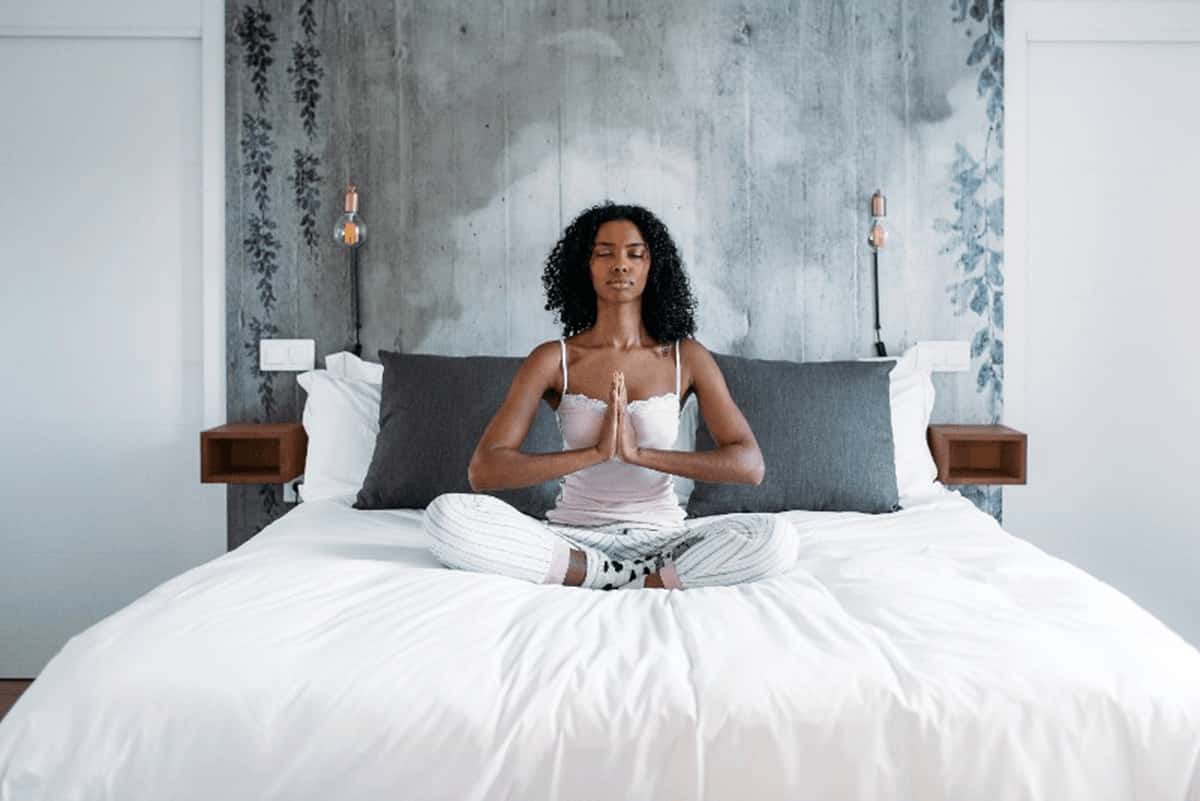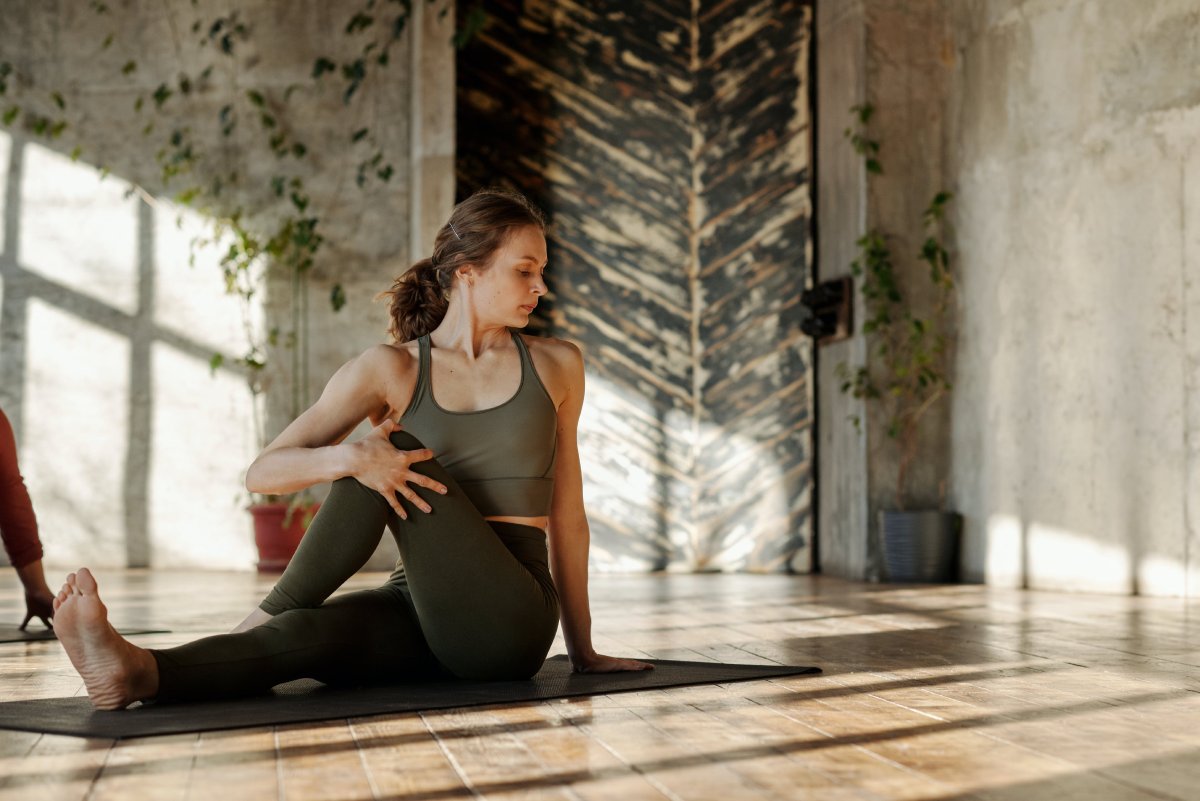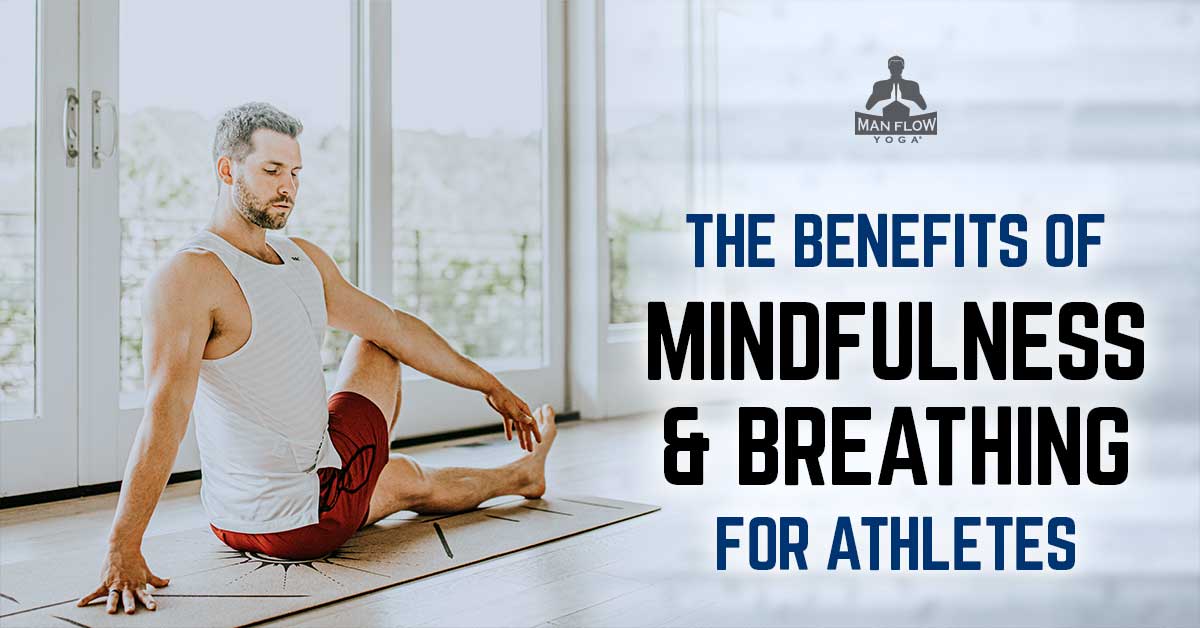Yoga for Sleep: Ultimate Guide to Conquer Insomnia with Bedtime poses
The post Yoga for Sleep: Ultimate Guide to Conquer Insomnia with Bedtime poses appeared first on The Yoga Nomads.

Have you ever considered the benefits of yoga for sleep? Personally, I have found that incorporating yoga into my routine has significantly improved the quality of my sleep.
Yoga has been practiced for its numerous physical and mental health benefits for centuries. This claim is supported by scientific research, which shows that practicing yoga poses and breathing techniques can effectively relax both the body and mind, leading to a good night’s sleep.
Incorporating yoga into your daily routine can significantly impact your sleep patterns. By practicing yoga for sleep, I found myself falling asleep faster, sleeping more soundly, and waking up feeling refreshed and energized.
This article will delve into the details of how yoga affects our sleep, outlining specific poses that aid in relaxation before bedtime and lifestyle changes that can further enhance your quality of rest. So, whether you’re a seasoned yogi or a beginner, read on to learn how yoga can help you achieve a deeper, more restful sleep.
The Science Behind Sleep

Understanding the Sleep Cycle
Sleep isn’t just a single state. It’s a cycle with various stages. Each stage plays a role in rest and recovery.
The sleep cycle, enhanced by a bedtime yoga routine, starts with light sleep, moves into the tranquility of deep rest, and then hits REM (Rapid Eye Movement). In addition, the cycle repeats several times throughout the night. Incorporating yoga nidra and mindful breaths can further support this process.
Melatonin: The Sleep Hormone
Melatonin is your body’s natural sleep aid. It helps regulate your sleep-wake cycle.

When it’s dark, your body combats sleep disturbances by producing more melatonin, signaling that it’s time for quality sleep. This might be a good time to try a bedtime yoga routine or yoga nidra. Conversely, when it gets light outside, melatonin production decreases.
Stress and Its Effects on Sleep
Stress can wreak havoc on quality sleep. A bedtime yoga routine can help temper our nervous system’s “fight or flight” response, leading to fewer sleep disturbances. This rest-inducing practice involves taking deep breaths, holding for a few seconds, and releasing.
Research shows that yoga, using controlled breaths, mindful seconds, and specific hand and back postures, can help manage stress levels, promoting better rest at night.
Importance of REM Stage
The REM stage is where the magic happens! This is when we rest and dream, and our brain processes information from the day. In these moments, our back relaxes, the tension in both our right and left leg lowers, our hands get loosened, and we take deep breaths.
REM is vital for restorative sleep as it rejuvenates both mind and body, taking us back to our targets, guiding our thoughts to clarity, and calming our breaths. So, getting enough REM time, taking restful breaths, laying back, and relaxing your body is crucial for feeling refreshed in the morning!
The Science Linking Yoga and Sleep

If you are struggling with sleep issues and spend your night restlessly turning in bed, practicing yoga can be a game-changing experience. Yoga is known to help with pain in your lower back, spine, neck, and even your right or left knee. It also helps release muscle tension and aids in weight loss. Moreover, regularly practicing different yoga positions can help you sleep without interruptions, so you do not have to switch sides throughout the night.
Let’s dive into how yoga influences your body and mind, fostering better sleep and bringing balance back to your left-out wellness routines.
Yoga Stimulates Relaxation
Yoga activates the parasympathetic nervous system—your body’s rest-and-digest function, helping you get back to a state of calm. This helps you chill out, taking you from a keyed-up state to a calm-down mode and bringing back balance.
Certain poses like Child’s Pose or Legs-Up-The-Wall encourage relaxation and back relief. Deep stretching releases tension in muscles.Yoga Lowers Stress Hormones
Cortisol, the notorious stress hormone, messes up your sleep big time. Regular yoga practice helps keep cortisol levels in check.
Studies show a significant decrease in cortisol levels after a yoga session Less cortisol means less stress, leading to improved sleep qualityMindful Breathing Promotes Better Sleep
Breathing exercises in yoga—Pranayama—are not just hot air. They play a vital role in promoting sound sleep.
Deep breathing slows heart rate, paving the way for peaceful sleep Techniques like 4-7-8 breathing are proven to aid insomnia sufferersScientific Backing of Yoga for Sleep
Science backs the benefits of yoga for sleep improvement. Several studies validate this link.
Best Yoga Styles for Better Sleep
Yoga can be a game-changer for those struggling with sleep. Let’s dive into four yoga styles that can help you catch better zzz’s.
Restorative Yoga: Gentle Path to Relaxation
Restorative Yoga is like hitting the chill button before bed. It has gentle poses that let your body relax and wind down.
Pros: Helps reduce stress and anxiety. Cons: Requires props like bolsters or blankets.Yin Yoga: Deep Tissue Relaxation
Think of Yin Yoga as a deep-tissue massage for your body. This style focuses on longer holds, targeting deeper tissues and joints.
Pros: Promotes relaxation and flexibility. Cons: It might be challenging for beginners due to long holds.Nidra Yoga: Conscious Relaxation Techniques
Nidra Yoga is all about conscious relaxation. It guides you to a state between wakefulness and sleep, improving your sleeping patterns.
Pros: Enhances mindfulness and reduces insomnia. Cons: This may require practice to achieve desired results.Hatha Yoga: Gentle Poses for Bedtime
Hatha yoga includes gentle postures perfect for bedtime routines. These poses can help calm your mind and prepare your body for sleep.
Pros: Improves sleep quality, suitable for all levels. Cons: Some poses might need modifications based on individual flexibility.So there you have it! Four yoga styles that could pave the way to improved sleep. Remember, consistency is key in yoga – stick with it, and sweet dreams are just around the corner!
Essential Bedtime Yoga Poses Explained
We’re going to discuss four yoga poses that can help you sleep better. They are simple, easy to do, and have many benefits.
Child’s Pose (Balasana)
Child’s Pose is a restful pose that helps relieve stress. Here’s how you do it:
Kneel on the floor. Touch your big toes together and sit on your heels. Separate your knees about as wide as your hips. Exhale and lay your torso down between your thighs.This pose can help calm the brain, relieving stress and fatigue.
Legs-Up-The-Wall Pose (Viparita Karani)
This pose involves lying on the floor with your legs up against a wall. It helps drain stagnant fluids from the legs and renews blood flow.
To perform this pose:
Sit next to a wall. Lie back onto the ground. Swing your legs up onto the wall.Corpse Pose (Savasana)
The Corpse Pose is usually done at the end of a yoga session to relax the body.
Here’s how you do it:
Lie flat on your back. Let your arms and legs drop open. Close your eyes, breathe naturally, and let go of any tension in your body.This pose helps reduce headaches, fatigue, and insomnia.
Reclining Butterfly Pose (Supta Baddha Konasana)
This relaxing pose opens up the hips and chest area.
Steps for this pose:
Lie on your back. Bend both knees, bringing feet together to touch. Allow knees to fall outwards, forming a diamond shape with legs.Incorporating these poses into a bedtime yoga routine can improve sleep quality significantly.
Wide-Legged Forward Bend (Prasarita Padottanasana)

This pose stretches and strengthens the legs, releases tension in the spine, eases back pain, and strengthens the feet and ankles.
Steps for this pose:
Step feet wide apart, lift inner arches, firm outer edges of feet, and big toes into the floor. Place hands on hips, lengthen spine, and open chest. Exhale and fold forward from hips with a straight back. Place hands on the floor or blocks. Take a few breaths. Exhale and fold forward, resting fingertips on the mat in a Wide-Legged Standing Forward Bend.Applying Yoga for Insomnia Relief
Yoga is a powerful tool to combat insomnia. It involves Pranayama breathing exercises, meditation, and regular practice in a calm environment.
Pranayama Breathing and Insomnia
Pranayama is more than just inhale and exhale. It’s an ancient yogic technique that promotes relaxation and helps manage insomnia symptoms. Here’s how:
Deep breathing triggers your body’s relaxation response. It reduces stress, a common cause of insomnia. Regular practice can improve sleep quality.For beginners, try the 4-7-8 breathing method. Inhale for four seconds, hold for seven, then exhale for eight.
Meditation Plus Yoga Poses
Incorporating meditation with yoga poses enhances their effectiveness against insomnia. For instance, yoga nidra, or “yogic sleep,” combines deep relaxation with inner awareness. Studies show it can significantly reduce insomnia and pain.
Consistency Is Key
Regularly practicing yoga for sleep can be a powerful tool in combating insomnia. By incorporating yoga into your daily routine, you can experience a sense of calm and relaxation to a deeper and more restful sleep. Over time, this consistent practice can help alleviate insomnia symptoms and improve overall sleep quality.
Set aside time each day for your routine – even just 15 minutes before bed can make a difference!
Calm Environment for Bedtime Yoga
Your environment plays a big role, too! A quiet space free from distractions aids in relaxation and makes your bedtime yoga routine more effective.
Consider these tips:
Dim the lights or use candles. Play soft music or nature sounds. Make sure the room temperature is comfortable.Remember: The goal of yoga isn’t to perform complex poses but to create harmony between mind and body. So breathe deeply, meditate often, be consistent, and cultivate a peaceful space. You’ll soon find yourself drifting off into dreamland effortlessly!
Your Personal Sleep Foundation Score™
What’s the Sleep Foundation Score?
This score is a unique measure. It tells how well you sleep.
The Contributing Factors
Your score depends on many things. These include your sleep habits and bedroom environment.
For example, your bed’s quality matters. A good mattress and pillow supports your body right.
The floor under your bed plays a role, too. It should provide firm support.
Also, consider where you place your feet and head. They need to be in comfortable positions.

Interpreting Your Score
A high score means you’re sleeping well. Low scores suggest room for improvement.
Remember, this isn’t a pass-or-fail test. It just targets areas that might need some tweaks.
Yoga for Better Sleep
Yoga can help improve your score. Here’s how:
Start by lying face-up on a yoga cushion. Place your arms at your sides. Close your eyes and focus on deep breathing. Do this daily before bedtime for best results.The Power of Bedtime Yoga
In summary, the practice of yoga before bedtime can significantly enhance sleep quality. The scientific links between yoga and improved sleep patterns are well-documented and backed by numerous studies. Incorporating specific styles and poses into a routine can alleviate insomnia symptoms and build a stronger sleep foundation.
We encourage you to explore the transformative power of bedtime yoga further. Start with the essential poses explained in this post, gradually integrating them into your lifestyle. Remember, consistency is key.
FAQs
Which style of yoga for sleep is best for improving bedtime?
Restorative and Yin Yoga are two styles highly recommended for better sleep. These two styles are specifically designed to promote relaxation and relieve stress, both of which are crucial for a good night’s sleep. Regular practice of these styles can create a serene and calming atmosphere that can help you relax and prepare for a restful night’s sleep.
How often should I practice yoga to see improvements in my sleep?
A large study has shown that those who practice yoga at least five times a week experience the most significant improvements in their overall health, sleep quality, and energy levels. Therefore, try to integrate yoga into your daily routine, even if it’s just a few minutes before bedtime. Remember, consistency is key to seeing results from practicing yoga.
Can beginners do bedtime yoga?
Absolutely! There are many yoga poses that are suitable for beginners, and you’ll find numerous online resources that can guide you through them. With the right guidance and a little bit of practice, you’ll be able to enjoy the benefits of bedtime yoga in no time.
What time before bed should I do yoga?
It’s ideal to do yoga at least an hour before bedtime. This allows your body to fully unwind and de-stress after the yoga session, allowing you to get a restful sleep. By doing so, you can reap the maximum benefits of yoga, including better flexibility, improved mood, and reduced stress levels.
Are there any risks involved in practicing yoga for sleep?
Before embarking on any new exercise routine, seeking guidance from a certified instructor or healthcare professional is always advisable. To prevent injury, it is crucial to properly warm up and stretch your muscles before engaging in physical activity, just like with any other form of exercise. Taking these precautions ensures that you approach your exercise regimen safely and effectively and avoid injuries.

 AbJimroe
AbJimroe 




































